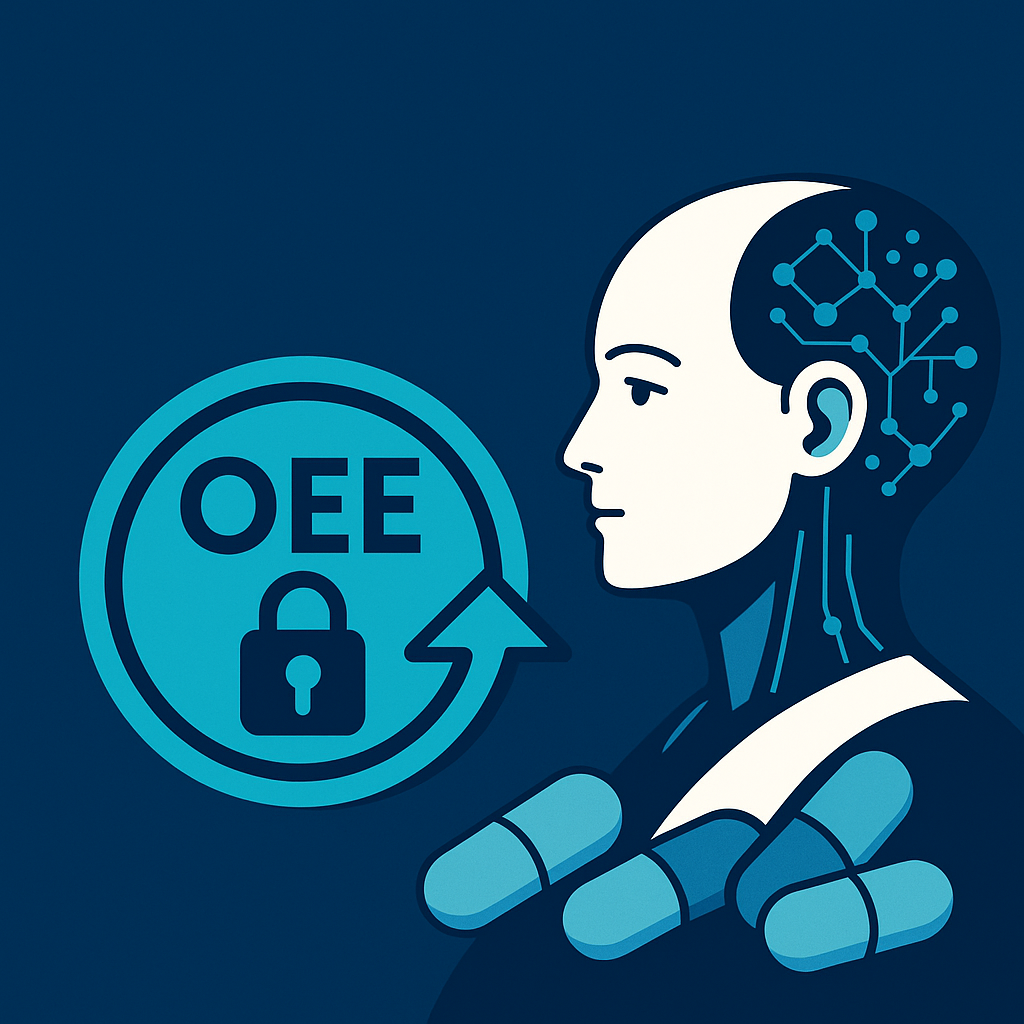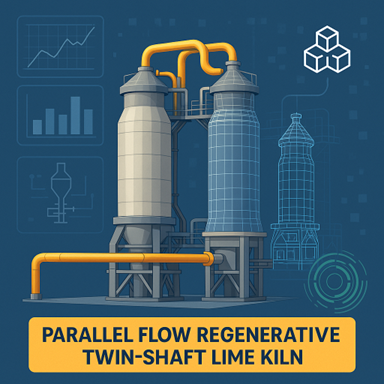Enhancing Pharma Plant Capacity with Agentic AI: A Multi-Agent Strategy

Introduction
With increasing global healthcare demand, pharmaceutical companies face constant pressure to boost production while maintaining stringent regulatory compliance and quality standards. Traditional capacity expansion methods—adding physical infrastructure or increasing workforce—often come with high costs and long timelines. Enter Agentic AI—a class of intelligent, autonomous AI agents designed to work collaboratively, adapt to real-time data, and optimize operations end-to-end.
This article explores how Agentic AI, supported by knowledge graphs and multi-agent orchestration, can significantly enhance pharmaceutical plant capacity, agility, and responsiveness to market demands.
What is Agentic AI?
Agentic AI refers to AI systems that exhibit autonomous decision-making and dynamic adaptation capabilities. Unlike rule-based automation, agentic AI can learn from real-time operational data, simulate outcomes, and act with minimal human intervention.
In a pharmaceutical setting, agentic agents can monitor, predict, and control various unit operations such as granulation, compression, coating, and packaging—adjusting processes proactively to optimize throughput and quality.
Why Capacity Enhancement is Critical in Pharma?
Pharma manufacturing faces unique challenges:
- Demand surges (e.g., due to pandemics or regulatory approvals)
- Batch variability and quality control
- Stringent regulatory timelines
- Complex multi-stage production with interdependencies
Traditional systems fail to dynamically adjust operations or reroute production across equipment efficiently. This results in underutilized assets, bottlenecks, and delayed deliveries.
Multi-Agent System Architecture for Capacity Enhancement
To meet the demand surge and unlock hidden capacity, a multi-agent AI architecture is implemented with the following layers:
- Data Ingestion Layer
- Collects real-time data from multiple data sources
- Data can be Process BMR, Manuals of Equipment, SOP documents, Guidelines, and others.
- Knowledge Graph Layer
- A process-level context-aware knowledge graph is built to provide the relation between raw material, machine used in process flow, operating parameters, Quality parameters, and batch-level data.
- Contextualizing data in a knowledge graph assists in connecting siloed data present in an organization.
- Agentic AI Layer (Multi-Agent System)
Each agent handles a specific function:
|
Agent |
Responsibility |
|
Scheduler Agent |
Dynamically reassigns and optimizes batch schedules across available production lines based on real-time machine availability, maintenance alerts, shift plans, and order priority. It minimizes idle time, reduces changeovers, and balances load to avoid bottlenecks. |
|
Quality Agent |
Continuously monitors critical process parameters (CPPs) and critical quality attributes (CQAs) during production to ensure they remain within validated regulatory limits (e.g., FDA, GMP). It flags deviations, performs root cause checks, and ensures batch quality even when rerouted. |
|
Predictive Maintenance Agent |
Uses sensor data and maintenance history to predict potential equipment failures. Proactively flags machines that are at risk, recommends maintenance windows, and informs the Scheduler Agent to reroute or delay batches to maintain throughput without downtime |
|
Inventory Agent |
Tracks in real-time quantity of raw materials (APIs, excipients, packaging) and compares them against production requirements. It forecasts shortages, initiates replenishment or internal reallocation, and ensures materials are available to support the rescheduled production plan |
These agents communicate continuously, share contextual knowledge, and coordinate to maximize capacity with minimal risk.

Fig. 1 Overview of Agentic AI Structure
Example Use Case: Tablet Manufacturing Line
Scenario:
A pharma plant operates two tablet compression lines and one coating unit. One line goes down due to maintenance. The sudden spike in demand due to a new drug launch risks a backlog.
Agentic AI in Action:
- Maintenance Agent flags the issue and projects repair time.
- Scheduler Agent redistributes compression workload to the alternate line and suggests activating an idle pilot line for partial production.
- Inventory Agent checks excipient availability and raises a purchase order for any shortfall.
- Quality Agent runs real-time analytics to ensure new process paths still comply with GMP standards.
Result: The plant avoids downtime, meets the delivery schedule, and utilizes resources at 95% efficiency.

Figure 2: Agent-level workflow for capacity enhancement
Benefits of Agentic AI for Pharma Capacity Enhancement
- Dynamic Load Balancing: Distributes workload across lines in real-time.
- Faster Turnaround Time: Minimizes bottlenecks and idle time.
- Increased Throughput: Unlocks latent capacity without new infrastructure.
- Regulatory Compliance: Maintains quality and traceability.
- Cost Reduction: Optimizes maintenance costs.
Implementation Considerations
- Data Harmonization: Standardize formats across legacy systems.
- AI Training: Use historical batch data for accurate model behaviour.
- Human Oversight: Initially supervised operations until trust in autonomy develops.
- Scalability: Modular agent design allows scaling from a single line to enterprise-level orchestration.
Conclusion
Agentic AI offers a transformative, realistic path to pharma plant capacity enhancement. Through a coordinated system of intelligent agents working on a contextual knowledge graph, pharmaceutical manufacturers can achieve agile, efficient, and compliant operations that adapt to market dynamics in real-time. Rather than building new plants or adding labor, smart orchestration of existing resources becomes the competitive edge.
Reference
- Lindahl (2024) Strategic capacity planning under uncertainty provides actionable capacity-expansion frameworks for multi-stage pharmaceutical manufacturing systems
- Wooldridge, M. (2009). An Introduction to MultiAgent Systems (2nd ed.). Wiley
- Jennings, N. R. (2001). An agent-based approach for building complex software systems. Communications of the ACM, 44(4), 35–41.
Domain-Wise PlantGPT
It is built around purpose-designed micro-agents that collaborate to provide real-time conversational assistance, decision support, and advisory insights tailored to daily plant operations.
Book a Demo →Dx. Consulting Services
Our strength lies in the fusion of deep consulting experience, process domain expertise, and digital execution excellence. This rare combination enables us to go beyond traditional digital transformation.
Book a Meeting →Agentic AI Services
Knowledge Graph as a Service (KGaaS) is a scalable, agent-driven platform that transforms siloed, unstructured, and structured industrial data into a semantically connected, intelligent knowledge network. Built on industry standards and ontologies, the platform enables next-gen applications in root cause analysis, process optimization, SOP automation, and decision augmentation.
Book a Meeting →FAQs
How is Agentic AI different from traditional automation?
Agentic AI operates autonomously with contextual understanding and collaboration between agents, unlike fixed-rule automation, which lacks adaptability.
Does implementing Agentic AI require new machinery?
No, it enhances existing infrastructure by integrating with current systems (SCADA, MES, ERP) and unlocking hidden efficiencies.
Can Agentic AI help with regulatory compliance?
Yes. The quality agent ensures all process deviations are logged, analysed, and kept within validated parameters as per GMP and FDA norms.
Is it scalable across multiple facilities?
Yes. Once the framework and knowledge graph are in place, it can scale across lines, products, and sites.
How long does deployment take?
Depending on system complexity, initial deployment may take 6–12 months, with iterative scaling afterward.
Related Blogs

Smarter OEE: Unlocking Pharma Efficiency with Agentic AI

Forecasting Failures: Smart Maintenance of Falling Film Evaporators in the Sugar Manufacturing industry


